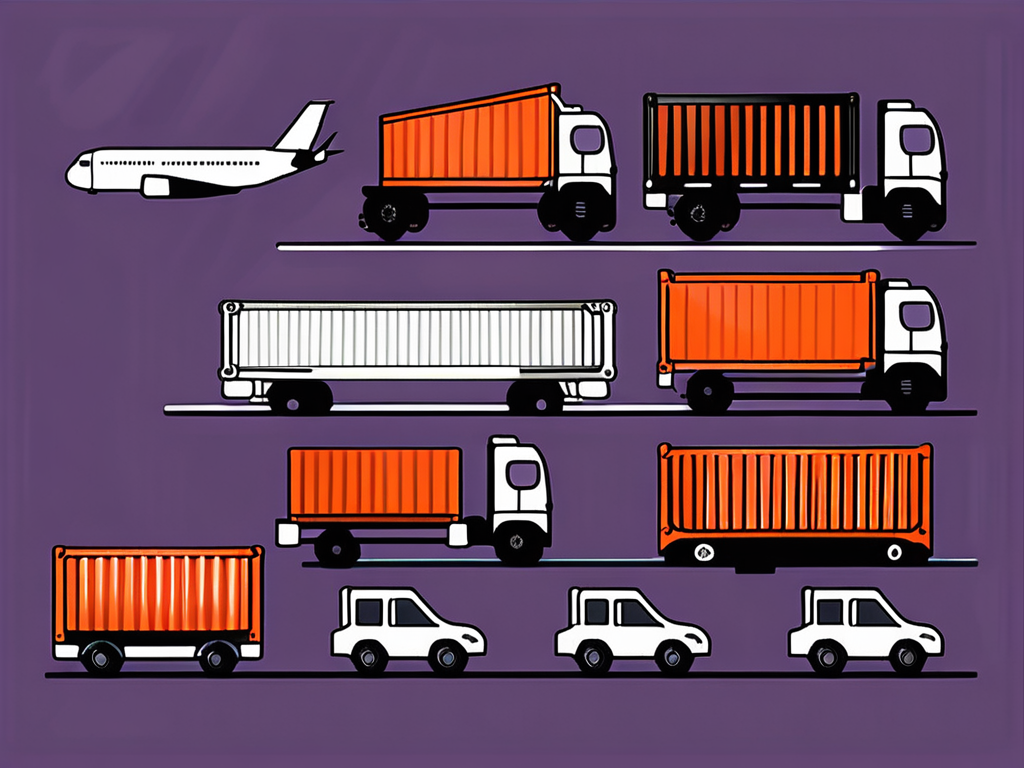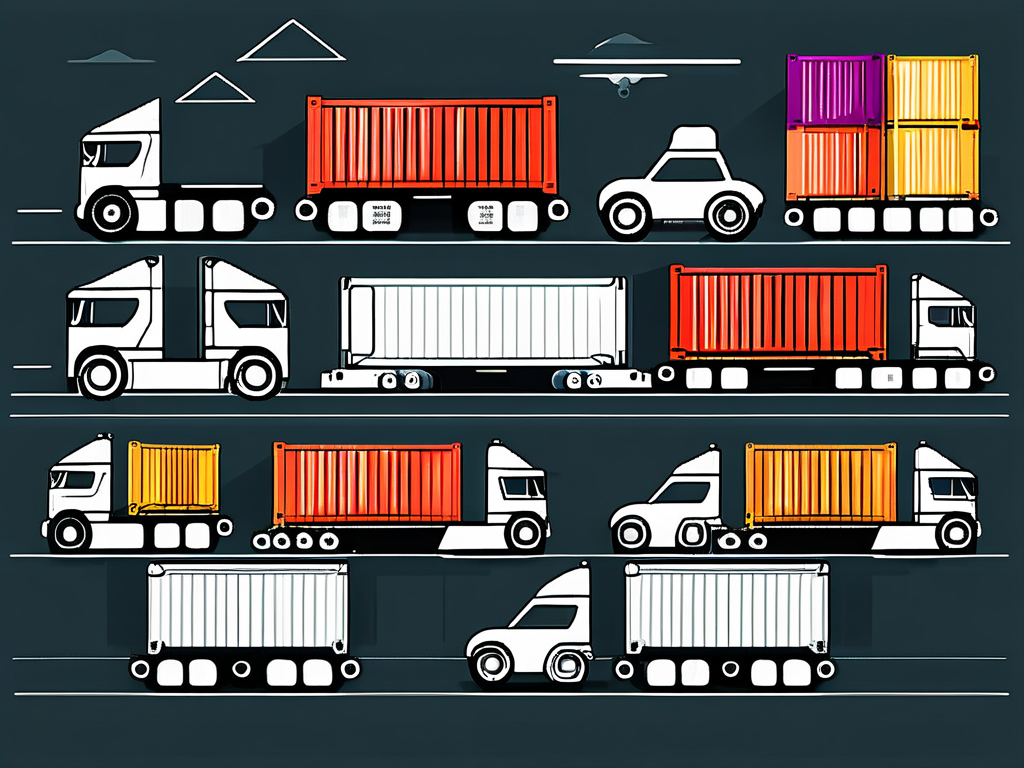Many businesses want to know what is dynamic freight pricing in logistics. It is a transformative approach that leverages real-time data and advanced algorithms to determine shipping costs. This innovative pricing model adapts to various factors such as demand, fuel prices, and route efficiency, offering a more flexible and cost-effective solution for businesses.
In this article, we will explore the concept of dynamic freight pricing, its benefits, and how it is revolutionizing the logistics industry.
Table of Contents
ToggleUnderstanding Dynamic Freight Pricing in Logistics

Dynamic freight pricing is an adaptive approach to pricing shipments that considers real-time factors such as demand, fuel costs, capacity availability, and even weather conditions. It involves using data-driven algorithms and sophisticated software to calculate the most efficient price for each shipment, maximizing profits while meeting customer demands.
- Real-Time Adjustments: Prices change based on current market conditions.
- Data-Driven: Uses algorithms and software for accurate pricing.
- Multiple Factors: Considers demand, fuel costs, capacity, and weather.
The Role of Dynamic Freight Pricing in Logistics
In the complex web of logistics, dynamic freight pricing serves as a critical tool for freight management. By adopting this strategy, logistics companies can streamline their operations, enhance customer satisfaction, and improve overall cost efficiency.
- Informed Decision-Making: Considers numerous variables affecting transportation costs.
- Adapts to Fluctuations: Quickly responds to changes in demand and market conditions.
The Mechanism Behind Dynamic Freight Pricing
Now that we understand the significance of dynamic freight pricing, let’s delve into the inner workings of this revolutionary approach. Dynamic freight pricing is a cutting-edge strategy that has transformed the logistics industry by offering a flexible and responsive pricing model based on real-time market conditions.
By incorporating advanced technology and data analytics, dynamic freight pricing enables companies to adapt their pricing strategies dynamically, ensuring competitiveness and efficiency in the ever-evolving transportation landscape.
Factors Influencing Dynamic Freight Pricing
Dynamic freight pricing takes into account a wide range of factors that influence the cost of transportation. These factors may include but are not limited to:
- Current fuel prices
- Freight volume and demand
- Capacity availability
- Distance and travel time
- Market conditions and competition
- Weather conditions and seasonal trends
Each of these factors plays a crucial role in determining the final price of freight transportation, highlighting the complexity and sophistication of the dynamic pricing model.
How Dynamic Freight Pricing Works
The implementation of dynamic freight pricing involves a sophisticated algorithm that analyzes real-time data to determine the most optimal price for each shipment. This algorithm takes into account various factors and calculates a price that maximizes profitability while meeting customer expectations.
Advanced Algorithm and Real-Time Data Analysis
Dynamic freight pricing relies on an advanced algorithm that continuously analyzes real-time data. This data-driven approach ensures that every price quote is accurate and reflective of current market conditions.
- Comprehensive Data: Considers demand, fuel costs, capacity, and weather conditions.
- Optimal Pricing: Balances profitability with customer satisfaction.
- Real-Time Adjustments: Updates pricing based on the latest data.
Sophisticated Software Solutions
With the help of advanced software solutions, logistics companies can access comprehensive data and instantaneously generate accurate quotes for their customers. This enhances transparency and enables efficient decision-making for both the company and the customers.
- Instant Quotes: Provides customers with immediate, accurate pricing.
- Enhanced Transparency: Builds trust and improves customer relations.
- Efficient Decision-Making: Streamlines operations for better management.
Advantages of Dynamic Freight Pricing in Logistics
Dynamic freight pricing not only revolutionizes the way logistics companies operate but also significantly impacts the overall efficiency and profitability of the industry. By embracing this innovative pricing strategy, companies can stay ahead of the curve and remain competitive in an ever-evolving market.
Cost Efficiency in Freight Management
Dynamic freight pricing enables logistics companies to optimize their pricing strategies, resulting in increased cost efficiency. By adjusting prices based on demand levels, capacity availability, and other factors, companies can ensure they are not leaving money on the table and are maximizing their profit margins.
- Optimized Pricing: Adjusts based on real-time factors to maximize profits.
- Informed Decisions: Real-time data helps identify cost-saving opportunities.
- Streamlined Operations: Leveraging technology and data analytics reduces overhead costs.
With real-time data at their disposal, companies can make informed decisions regarding routing, scheduling, and resource allocation. This approach leads to streamlined operations and reduced overhead costs. By leveraging technology and data analytics, companies can fine-tune their pricing models to achieve greater operational efficiency and ultimately drive down costs.
Flexibility and Adaptability in Pricing
Dynamic freight pricing offers unparalleled flexibility and adaptability in the highly competitive logistics landscape. With the ability to adjust prices on the fly, companies can respond quickly to market changes, unexpected scenarios, and customer demands.
- Quick Adjustments: Responds swiftly to market changes and customer demands.
- Competitive Pricing: Offers transparent and fair pricing options.
- Customer Loyalty: Builds trust and long-lasting partnerships through adaptable pricing.
This adaptability also fosters better customer relationships, as companies can offer competitive pricing options that cater to the individual needs of their clients. By providing customers with transparent and fair pricing, companies can build trust and loyalty, ensuring a long-lasting partnership.
Moreover, the flexibility inherent in dynamic freight pricing allows companies to explore innovative pricing structures and value-added services. By customizing pricing packages to meet specific customer requirements, companies can differentiate themselves in the market and attract a diverse range of clients.
- Innovative Pricing: Explores new pricing structures and value-added services.
- Market Differentiation: Customizes pricing packages to attract diverse clients.
- Value-Added Services: Enhances customer satisfaction with tailored offerings.
Challenges and Solutions in Implementing Dynamic Freight Pricing
Although dynamic freight pricing brings numerous benefits, implementation does come with its fair share of challenges. However, with the right approach and strategies in place, these challenges can be effectively addressed.

One of the main challenges in implementing dynamic freight pricing is the risk of underpricing or overpricing. Finding the right balance between maximizing profitability and remaining competitive can be a delicate task. It requires careful analysis of market trends, customer demand, and operational costs. Companies need to consider factors such as fuel prices, labor expenses, and fluctuating market conditions to ensure that their pricing remains fair and sustainable.
Additionally, the availability and accuracy of real-time data can pose challenges. However, advancements in technology and data analytics have significantly reduced these hurdles, making it easier for companies to access reliable and up-to-date information. With the help of sophisticated software and data analysis tools, logistics companies can now gather and analyze data on factors like customer behavior, market demand, and competitor pricing. This enables them to make informed decisions and adjust their pricing strategies accordingly.
Strategies for Effective Implementation
To overcome the challenges of implementing dynamic freight pricing, logistics companies need to adopt a strategic approach. Here are some effective strategies:
- Investing in advanced software and technology that can handle complex data analysis in real-time. This includes implementing predictive analytics tools that can forecast market trends and customer demand, allowing companies to adjust their pricing dynamically.
- Collaborating with industry experts to ensure compliance with legal and regulatory frameworks. Freight pricing is subject to various regulations, such as anti-discrimination laws and fair trade practices. Working with experts in the field can help companies navigate these complexities and avoid legal pitfalls.
- Regularly reviewing and updating pricing models based on market trends and customer feedback. It is essential for companies to stay agile and responsive to changes in the market. By continuously monitoring customer preferences and market dynamics, companies can fine-tune their pricing strategies to remain competitive.
- Establishing strong partnerships with reliable and trustworthy carriers to optimize capacity and enhance service quality. Collaborating with carriers who have a proven track record of reliability and efficiency can help logistics companies streamline their operations and ensure timely delivery. This, in turn, can contribute to better customer satisfaction and loyalty.
The Future of Dynamic Freight Pricing
As technology continues to advance at an exponential rate, the future of dynamic freight pricing holds immense potential for further innovation and optimization. The ability to adapt pricing in real-time based on market conditions and demand fluctuations is a game-changer for the logistics industry.

Technological Innovations Impacting Dynamic Pricing
With the advent of artificial intelligence (AI) and machine learning (ML), logistics companies can leverage predictive analytics to:
- Forecast demand
- Optimize routes
- Calculate accurate pricing
These technological advancements eliminate the need for manual analysis and allow for more precise and efficient pricing strategies.
For example, AI algorithms can analyze historical data, market trends, and even weather patterns to predict demand patterns and adjust pricing accordingly. This level of automation not only saves time and resources but also ensures that pricing decisions are based on accurate and up-to-date information.
Predicted Trends in Dynamic Freight Pricing
In the coming years, dynamic freight pricing is expected to become even more prevalent in the logistics industry. As companies strive to increase efficiency and reduce costs, this innovative pricing strategy will play a crucial role in achieving those objectives.
Moreover, the integration of data from various sources, such as IoT-connected devices and telematics systems, will enable logistics companies to enhance dynamic freight pricing models, resulting in even greater accuracy and efficiency. Imagine a scenario where a shipment’s temperature can be monitored in real-time, and the pricing can be adjusted based on the preservation requirements.
This level of customization and adaptability ensures that both the logistics companies and their customers can optimize their operations and minimize wastage.
Furthermore, advancements in blockchain technology are also expected to have a significant impact on dynamic freight pricing. By providing a secure and transparent platform for transactions, blockchain can streamline the negotiation and execution of pricing agreements between shippers and carriers. This not only reduces the administrative burden but also enhances trust and accountability within the industry.
Transform Your Shipping Strategy with Real-Time Pricing
Dynamic freight pricing revolutionizes the logistics industry by optimizing pricing strategies, increasing cost efficiency, and improving customer satisfaction. With the right implementation and strategies in place, logistics companies can harness the power of real-time data to stay ahead in an ever-evolving market.
The future of dynamic freight pricing is bright, and the possibilities for innovation and optimization are endless.






